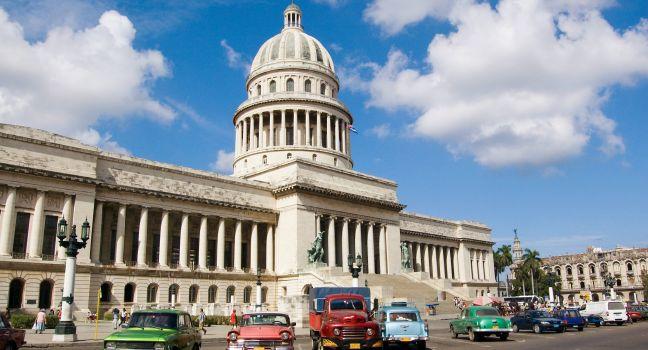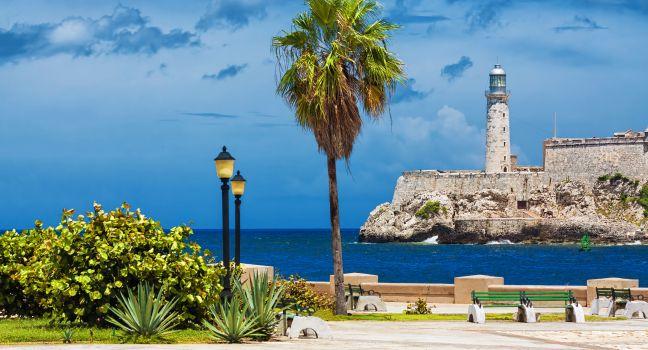Catedral de La Habana
Cuba's Cervantes Prize–winning novelist, Alejo Carpentier, may have borrowed from St. Augustine when he described the city's cathedral as "music made into stone," but the words—like the bells in the structure they describe—ring true and clear. Work on the church was begun by the Jesuits in 1748, who weren't around to see it finished in 1777. (King Carlos III of Spain expelled the Jesuits from the New World in 1767). The facade is simultaneously intimate and imposing, and one of the two towers is visibly larger, creating an asymmetry that seems totally natural. The two bells in the taller, thicker tower are said to have been cast with gold and silver mixed into the bronze, giving them their sweet tone. In Our Man in Havana, Graham Greene describes the statue of Columbus that once stood in the square as looking "as though it had been formed through the centuries underwater, like a coral reef, by the action of insects." This is, in fact, exactly the case: coral, cut and hauled from the edge of the sea by slaves, was used to build many of Havana's churches. Look carefully and you'll see fossils of marine flora and fauna in the stone of the cathedral.





